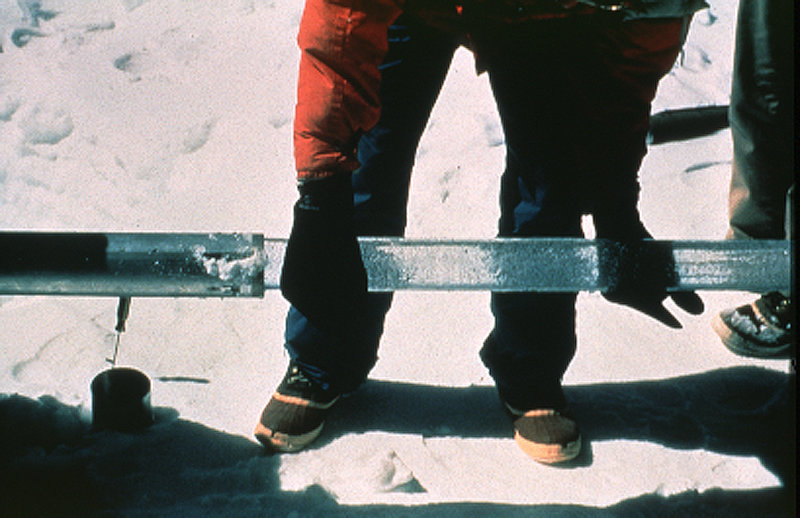Climate History - Glaciers as records
Glaciers are very useful tools for scientists who want to find out about past climatic conditions. This is because glaciers are made from snow that was created in the atmosphere, that trapped air from the atmosphere, and then sealed in it with ice, keeping it isolated from atmospheric changes.
Glaciers are also old, ranging from a few hundred years to hundreds of thousands of years old, so they represent an amazingly complete record of what air was like throughout the years.
To analyse the data contained in the glaciers, scientists bore down into the ice with a hollow drill. This produces an ice core, a long thin column of cut ice. These cores are then brought to the surface and stored in rooms where they remain frozen.
By carefully removing sections of ice and examining them, scientists can discover many facts about ancient climates. Analysis of the tiny air bubbles reveals the amounts of different gasses in the air, such as oxygen, carbon dioxide (associated with warming and cooling) and sulphur which is linked to volcanic eruptions.
As well as trapped gasses the ice contains solid matter like pollen (tells us what plants were growing), ash (from volcanic reactions) and even rarer minerals from meteorite strikes.
By taking all this evidence together, scientists can work out average temperatures for the earth over thousands of years, identify warm and cool periods and often suggest reasons for the changes too. In this way, we have identified past ice ages and possible events that triggered them. We have also discovered how dramatically a really big volcanic eruption can alter world temperatures.

Some quite unexpected opportunities are also revealed by glaciers. In September 1991 two hikers discovered a frozen body high in the Alps, near the border between Austria and Italy. Originally thought to be a dead climber, he turned out to be 5,300 years old. Analysis of the ice around him showed that it contained pollen from autumn-flowering plants, so they concluded that he had died in the autumn. His possessions, especially his clothing, showed pollen from a variety of plants, telling scientists what was growing around the mountains 5000 years ago, and thus giving clues to the local climate.
Using the assumption that 'the past is the key to the present and the future' this information can be used to predict what may happen in the future.
![]()
